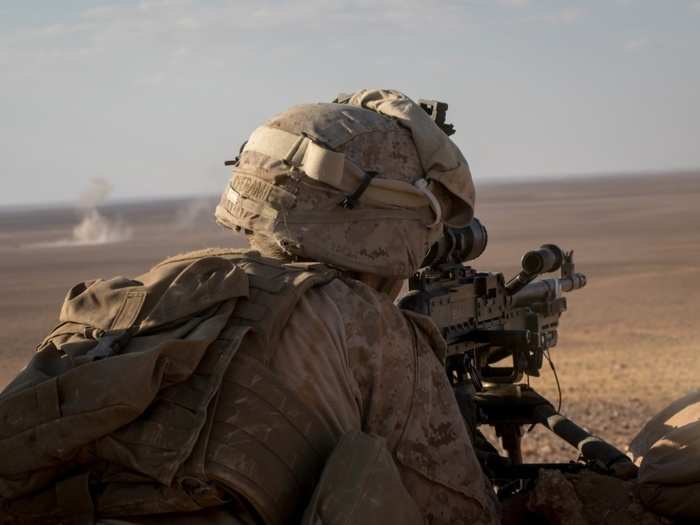
"The United States does not seek to fight the Russians, the government of Syria or any groups that may be providing support to Syria in the Syrian civil war," Brown previously told BI in an emailed statement.
"However," he added, "the United States will not hesitate to use necessary and proportionate force to defend US, coalition or partner forces, as we have clearly demonstrated in past instances."

Russia's interest in the deconfliction zone has nothing to do with combating terrorism in the region, a US defense official told BI. The At Tanf deconfliction zone sits in the middle of a major connection between Tehran and Damascus.
Moscow remains critical of the US military presence in Syria. Nonetheless, Russia agreed to a 55-kilometer deconfliction zone around the At Tanf garrison, and the US military continues to expect the Russians to continue to abide by this agreement.
The US military has previously engaged foreign forces that attempted to enter the deconfliction zone. For instance, last summer, coalition troops "destroyed" pro-regime forces that "advanced inside the well-established deconfliction zone," CENTCOM said in a statement.

The United Nations has stressed that a full-scale assault on Idlib would result in a humanitarian catastrophe. Tens of thousands of people have already begun fleeing the area.
The US has warned the Syrian regime led by Syrian President Bashar al-Assad that any use of chemical weapons will be met with a strong, swift response. "The president expects us to have military options in the event that chemical weapons are used,' Chairman of the Joint Chiefs of Staff Gen. Joseph Dunford said over the weekend, adding, "We have provided updates to him on the development of those military options."
US strikes on Syria in response to the use of chemical weapons run contrary to Russian interests and have resulted in criticism from Moscow.

Russia is currently holding major war games with China in the eastern part of the country, and these exercises are expected to be held on a "regular basis" going forward. The Pentagon is watching closely as the two US rivals strive to strengthen military ties.
During the drills, Russian Tu-95 Bear bombers escorted by Su-35 Flanker fighter jets were intercepted by F-22 stealth fighters near Alaska. It was the second time this month that American military aircraft have intercepted Russian bombers near the state.
 India's steel demand boom to continue, set to grow at 10% over next few years: Steel Secretary
India's steel demand boom to continue, set to grow at 10% over next few years: Steel Secretary
 Brewing brilliance: 5 essential tips for cold brew success
Brewing brilliance: 5 essential tips for cold brew success
 10 food items that can help you prevent suffering heat stroke
10 food items that can help you prevent suffering heat stroke

Copyright © 2024. Times Internet Limited. All rights reserved.For reprint rights. Times Syndication Service.